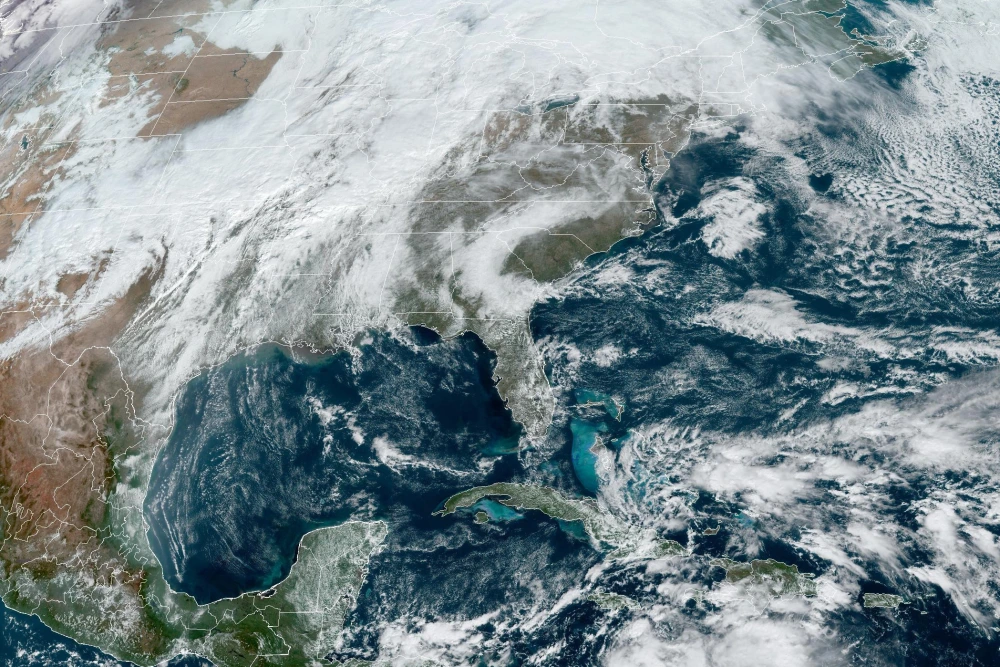KINGSTON — A disturbance in the Caribbean strengthened into Tropical Storm Rafael this afternoon. The storm is forecast to become a hurricane on Tuesday.
Rafael, previously known as Potential Tropical Cyclone 18, formed on Sunday. As of Monday at 4 p.m. ET, it was about 175 miles south of Kingston, Jamaica, with maximum sustained winds of 45 mph, and moving north at around 9 mph, according to the National Hurricane Center (NHC).
Rafael is the 17th named storm of the Atlantic hurricane season and will be the 11th hurricane if it strengthens further, as expected. The season lasts until November 30, though peak activity is usually around September 10.

The storm system is expected to approach the United States later in the week, the hurricane center said, and a tropical storm watch was issued Monday afternoon for the lower and middle Florida Keys and for the Dry Tortugas. Parts of Florida and nearby areas of the Southeast could see heavy rainfall by mid to late week, though NHC forecasters said it is still too early to make predictions about impacts for the Gulf Coast.
A hurricane warning has been issued for the Cayman Islands, and a tropical storm warning is in effect for Jamaica.
The government of Cuba issued a hurricane watch for a handful of provinces, and a tropical storm watch for other areas.
Forecasters expect the weather system to move near Jamaica later today, then to be near or over the Cayman Islands by late tomorrow, at which point it may be near or at hurricane intensity. It is then forecast to approach Cuba on Wednesday.

As early as this morning, NHC forecasters said the chance that the storm would become a hurricane over the next 48 hours was “near 100%.”
Rafael is forecast to dump 3 to 6 inches of rain across much of the western Caribbean, and up to 9 inches in some areas. The heaviest precipitation is expected in Jamaica.
Minor coastal flooding is possible in Jamaica on Monday evening, and storm surge up to 3 feet is expected in the Cayman Islands on Tuesday, the NHC said. Flooding and mudslides could also occur in parts of Jamaica and Cuba.
This hurricane season has proven to be an active one. Parts of the Southeast are still reeling from Hurricane Helene and Hurricane Milton, which hit two weeks apart in late September and early October.
Forecasters predicted an exceptionally busy hurricane season, in part because of record-high sea surface temperatures in the Atlantic.

Experts at Colorado State University, a prominent hurricane forecast center, said earlier this year that they anticipated a “hyperactive season.” The National Oceanic and Atmospheric Administration predicted eight to 13 hurricanes and 17 to 25 named storms — the highest the agency had ever projected in the annual outlook it issues in May.
An average Atlantic hurricane season has 14 named storms, seven hurricanes and three major hurricanes (classified as Category 3 or above), according to the NHC.
By MARLENE LENTHANG, DENISE CHOW and KATHRYN PROCIV/NBC News





